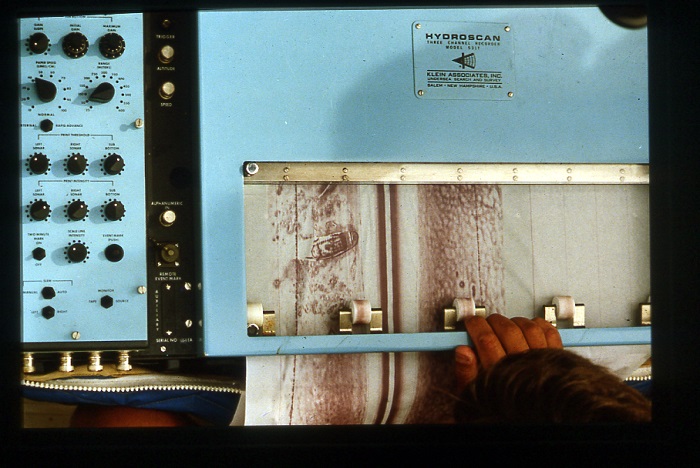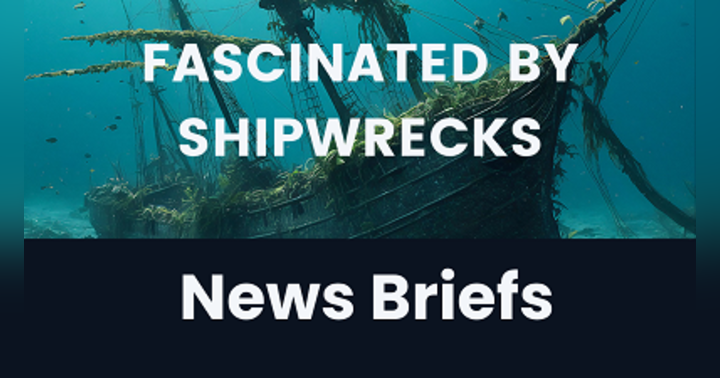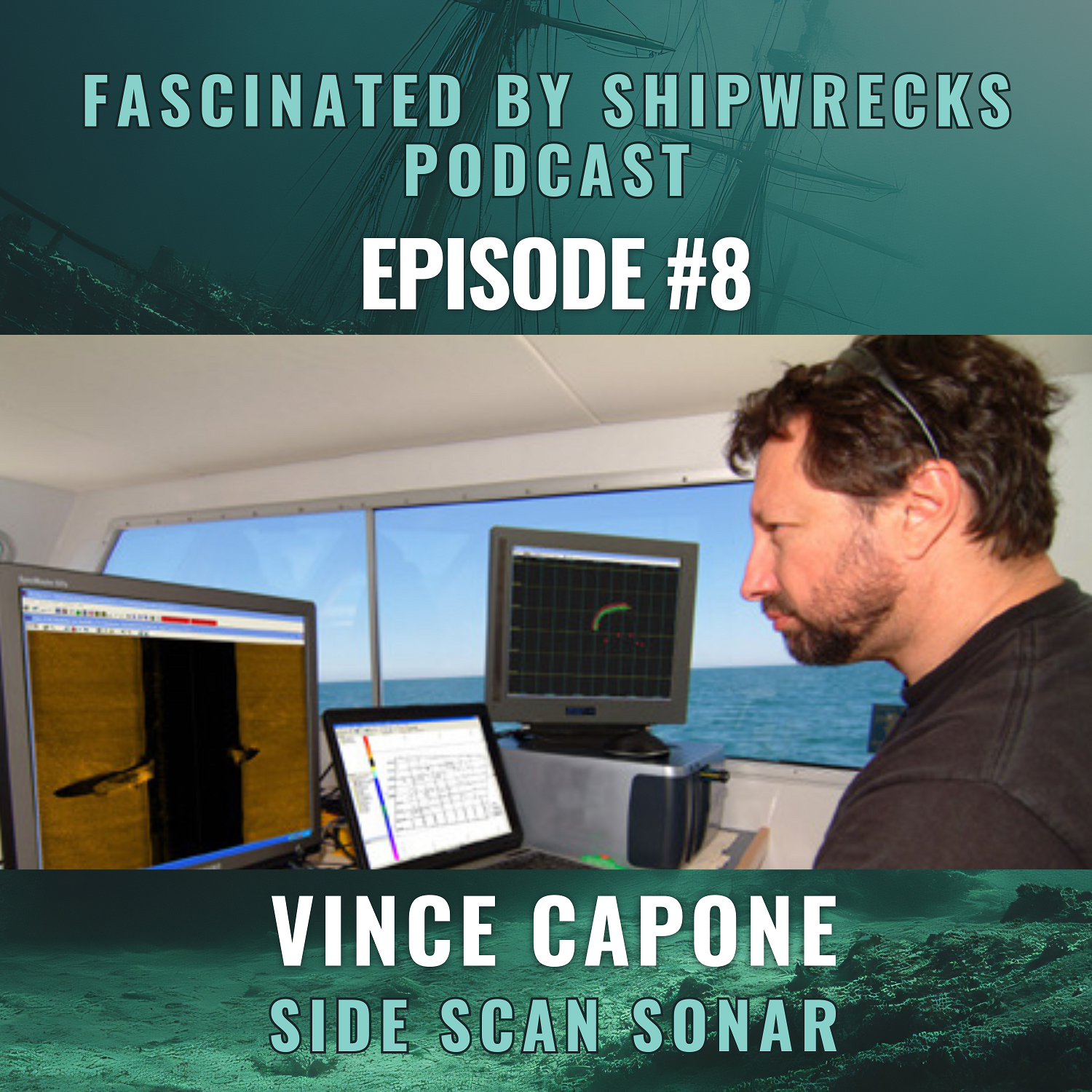Uncovering Lost History Beneath the Waves: A Conversation with Vince Capone

The first sonar image of the U 215 as was discovered by the Sea Hunters and in 2003. Credit: Vince Capone
For many, shipwrecks are the stuff of movies and history books. For Vince Capone, they’re part of everyday life. With over 35 years in marine sciences, Capone has spent his career uncovering secrets hidden beneath the surface—from warships lost to time to submarines buried in mud.
He joined us on the Fascinated by Shipwrecks podcast to share stories, insights, and a few surprises from his incredible journey through the world of underwater exploration.
A Childhood Spark Becomes a Lifelong Career
It all started in second grade. While most kids were dreaming of superheroes or summer vacation, young Capone was giving a classroom presentation on underwater creatures. Inspired by Jacques Cousteau’s television programs, he knew early on that he was headed for a life beneath the sea, at least metaphorically.
“No one around me was into marine science,” he recalls. “But I just knew that was where I was going.”
That sense of direction never wavered. Today, Capone is a highly respected expert in side scan sonar and underwater search operations. He trains Navy units, fire departments, and law enforcement teams to read underwater sonar and locate everything from lost vessels to submerged hazards.
Radeau Photomosaic © 1994 Bateaux Below, Inc. Photos Bob Benway/ Digital Photo Mosaic Kendrick McMahon
Discovering America’s Oldest Intact Warship
One of Capone’s most significant projects came in the early 1990s, when he was part of a volunteer team that discovered the Lake George Radeau, America’s oldest intact warship. Built in 1758 during the French and Indian War, the Radeau was a seven-sided gun platform that sank in Lake George, New York, during a failed winter preservation attempt.
Vince and the team didn’t just find the wreck; they meticulously surveyed it by hand. “We literally brought tape measures down underwater,” he said. “This was before the technology we have now. It was all manual.”
Using over 180 images stitched together with one of the first versions of Photoshop, the team produced what might be the first seamless color mosaic of a shipwreck, beating even National Geographic to the punch, he remarked.
Eventually, the Radeau became an underwater park and was listed on the U.S. Historic Register. For Capone, it was more than a project. It was a passion. “Those were my vacations,” he said. “I’d take a week off and go dive.”
A German Submarine and a Bit of Good Luck
Another unforgettable moment in Capone’s career came when he helped locate the German U-215 submarine off the coast of New England. Working with Canadian divers Mike and Warren Fletcher of The Sea Hunters series, he operated sonar equipment on a 65-foot trawler during an unusually calm weather window.
The U-215 was a mine-laying submarine that had attempted to disrupt shipping near Boston during World War II. Instead, it was sunk while engaging a convoy. Using sonar and historical research, the team narrowed down possible locations and, after days of scanning and minimal sleep, they struck gold.
“We were running 18-hour days,” he said. “It was a challenge, but we found her.”
The submarine’s unique features—including vertical mine tubes—were confirmed by divers. That expedition was later featured on The Sea Hunters and can still be found on YouTube for curious viewers.
A New Civil War Shipwreck Mystery
Even after decades in the field, Capone continues to chase new mysteries. One of the most exciting developments he shared on the podcast was the potential discovery of a lost Civil War-era submarine prototype.
The Confederate submarine Hunley is well known, but the U.S. Navy was also experimenting with early submarine designs. One of those early designs, predating the Alligator, vanished, possibly hidden in a marsh near the Delaware River.
Working alongside historian Alice Smith for over 15 years, Vince helped organize a magnetometer drone survey over the marsh. The results were astonishing.
“There was a huge magnetic anomaly—what I call a whammer jammer,” Capone said with a grin. “It matches the expected mass of that early submarine.”
Next steps include a ground-penetrating radar survey once the marsh freezes. With the support of the Explorers Club and fellow maritime archaeologist Jim Delgado, this expedition may rewrite another chapter of underwater history.

The Tools of the Trade—Then and Now
Capone also offered a look at how technology has changed over the course of his career. “When I started, there was no GPS,” he said. “We used to put buoys in the water and navigate between them.”
Back then, sonar data printed onto long rolls of thermal paper, and getting a usable image could take hours of calibration. Today, autonomous underwater vehicles (AUVs) and remote-operated vehicles (ROVs) can perform surveys while researchers monitor from a boat or even from shore.
Vince admits he once doubted the rise of underwater robots. “I said, there’s no way a robot can replace a towed system,” he laughed. “And now they’re everywhere.”
Artificial intelligence is also entering the field. Machine learning models are now being trained to identify sonar anomalies; a job that used to take trained human eyes hours or even days.
Still, he cautions, nothing beats human experience when things go wrong at sea. “You can’t replace people entirely. Robots get tangled in fishing nets, boats break down, and someone needs to fix it.”
Advice for the Next Generation
For those dreaming of working in marine science or shipwreck exploration, Capone’s advice is clear: be persistent.
“None of this is easy. You have to want it and go after it,” he said. “There are so many different ways to get involved; volunteering, joining a team, learning the tools.”
And perhaps most importantly, don’t go it alone.
“Everything I’ve accomplished has been because of a team,” he said. “No one person can do it all. Find good people, work together, and when you make it, help someone else make it, too.”
Want more fascinating stories from the deep?
Catch the full interview with Vince Capone on the Fascinated by Shipwrecks podcast. Listen or watch anytime. You'll see more photos in the video version!
© 2025 Fascinated by Shipwrecks







